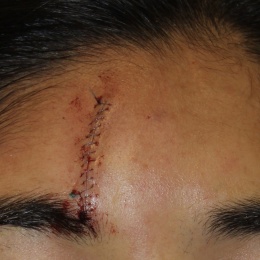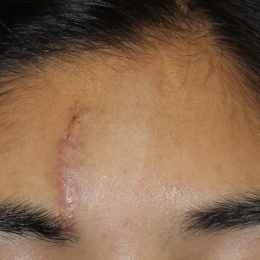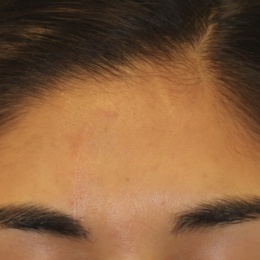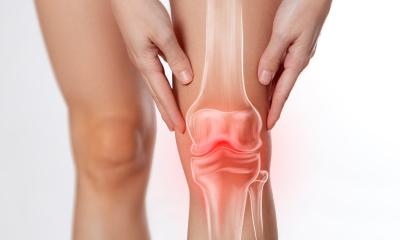News • Scar evaluation
Surgical scarring: Why patients and doctors often disagree
Penn study shows current assessment methods don’t put both parties on the same page
When it comes to the physical scars surgery leaves behind, a new study shows patients and doctors often don’t assess their severity the same way. Researchers from the Perelman School of Medicine at the University of Pennsylvania found patients and physicians disagreed in their scar evaluations 28 percent of the time, with patients more likely to focus on the depth of the scar while physicians were more likely to emphasize coloration and texture. The study’s authors say these findings point to the need for better evaluation methods and improved preoperative counseling. JAMA Facial and Plastic Surgery published the results.
About 230 million surgical procedures are performed worldwide each year overall. That includes surgeries that are gender-specific like cesarean sections or breast reconstruction, as well as procedures that are the same for all patients such as skin cancer surgery. In addition to the type of procedure, there are multiple other factors that impact the scars various procedures leave on a person’s body, such as method of skin incision, method of wound closure, suturing technique, or postoperative wound care.
“Our analysis includes results across multiple specialties and using multiple methods, which shows this patient-surgeon discrepancy is not limited to any particular discipline or intervention,” said the study’s senior author Joseph F. Sobanko, MD, an assistant professor of Dermatology and director of Dermatologic Surgery Education at Penn.
Sobanko and his team used studies from 1972 through 2015 that specifically looked at assessment of surgical scars for which surgeons tried two different methods of intervention, either incising the skin or suturing the skin with two different methods. They ended up with 29 studies involving 4,485 patients. In the 72 percent of cases in which doctors and patients had similar scar evaluations, the two groups were indifferent in terms of the intervention used. However, in the 28 percent of studies with disagreement, six out of eight patient cohorts (75 percent) rated one intervention as superior, while the physicians rated the interventions as equivalent. There were no studies where patients preferred one method while physicians preferred another. “It is somewhat common for patients to have post-surgical scars that are considered clinically acceptable but patients may still feel disfigured,” Sobanko said. “Many of the scales currently used to evaluate scars are insufficient to measure subtle scar features and patient satisfaction.”
These findings may help to improve preoperative counseling and highlight the importance of developing scar measures that balance the perceptions of patients and physicians
Joseph F. Sobanko
Sobanko says one problem with the scales is that they were not originally designed to measure surgical scars. Several of them were developed to evaluate burn scars instead. They also don’t take into account the difference in points of emphasis between patients and physicians. In studies using patient and observer scar assessment scale (POSAS) to rate scars, patients weighted scar depth as more important, while physicians emphasized scar pigmentation and texture/surface irregularities. By taking these priorities into account, surgeons can better set expectations. “These findings may help to improve preoperative counseling and highlight the importance of developing scar measures that balance the perceptions of patients and physicians,” Sobanko said. To that end, Sobanko said further research is needed to understand patient and physician expectations during initial visits, as well as how the anatomic location of the scar affects perception.
Source: Perelman School of Medicine at the University of Pennsylvania
26.01.2018














